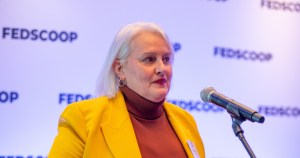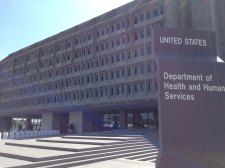Inside the design-thinking environment USDS is creating at CMS

The Centers for Medicare and Medicaid Services is looking to craft its extensive Quality Payment Program with a user-centered design program baked in, an official said Monday. And with the user at the center, that means completely changing the way those program requirements are created.
“One of the big things that we learned early on, that the U.S. Digital Service has been helping CMS do more tangibly, is actually test and understand how users would interact with the new policy before the policy is finalized,” Natalie Kates, product manager at U.S. Digital Service, said at a conference Monday on customer experience for the federal government.
During a panel on design thinking for improving customer experience, Kates and Adrien Abrams, chief product owner at CMS’ Quality Payment Program, discussed the many changes they are trying to implement while designing the program, including employing an agile development strategy, regularly testing user experience and upgrading the program’s technology infrastructure.
“We’re always under pressure to produce rollout programs on time and we normally react … specifically and directly to legislation,” Abrams said.
He said USDS has enabled the agency to incorporate specialties common in private industry, like designers, graphic designers, project managers and more, “so that as we roll the program out we’re doing so with not just the legislation in mind but try to say how does one meet the demands of the legislation.”
He added: “If all we’re building is a system, but there are no users, then there at the end of the day is a wasted investment.”
The agency has already seen one big transition in how it used some of its contractors: turning the business requirement team, originally responsible for creating the 1,000-page document with system requirements, into a user experience design team, Kates said.
“Instead of writing requirements, they’re actually now doing design and testing with users on a daily basis,” she said.
Kates said that group went from being a “fairly bored” team to a highly energized team who feel they are making more impact.
One priority when designing the new system, Abrams said, is really thinking about the “look and feel” of the new program “which is not something that CMS has previously prioritized if people have worked with some of our applications,” he joked at the conference.
User experience testing sometimes slows down policy development, Kates said, but sometimes it actually speeds it up by helping to more quickly point out problems and put data in front of the policy team to help changes happen fast.
“One of the things USDS has really emphasized with us is getting away from listening sessions, where you have, you know, a community of people getting together to talk to one person,” Abrams said, “and [instead] really getting into one-on-one experience.”
The program’s team is also employing agile methodology through two-week sprints, Abrams said.
“It’s really challenging with our contract structures and the way that we work to create the flexibility that allows us to pilot, to experiment, the way you see in private industry,” he said. “And so that we don’t have to make these very large investments and commit to a path — a technical path or a policy path. And so that’s really been the foundation.”
The technology underpinning the program is another of its important aspects.
Abrams said one of the first things CMS did was to make an “aggressive move” away from data centers to an Amazon Web Services Cloud infrastructure, along with moving toward open source code and software.
“And that’s been at the core of our strategy from the beginning,” he said.






